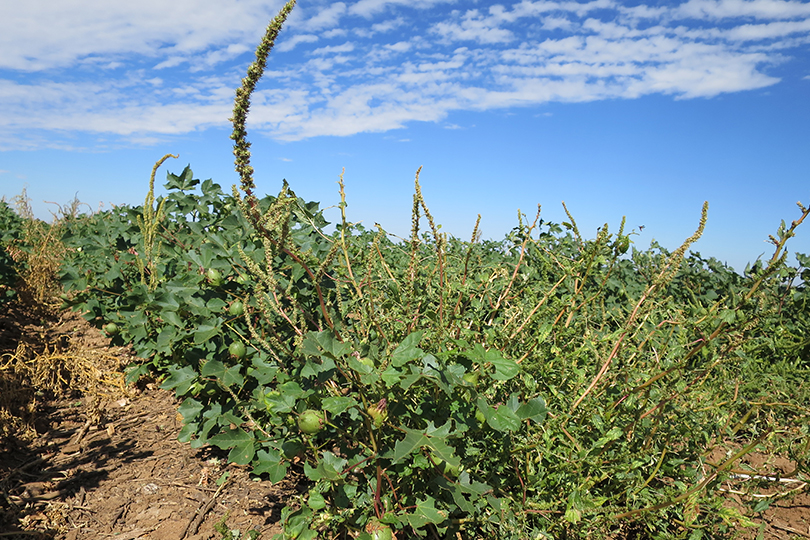By Jennifer Dorsett
Field Editor
Scientists at the University of Illinois recently published comprehensive genome information for three noxious agricultural weeds: waterhemp, smooth pigweed and Palmer amaranth.
The three plants are causing major agricultural losses across the globe.
But genomes completed by the university and published in a recent Genome Biology and Evolution study may help other researchers in developing new tools to clear the weeds from important agricultural crops.
“These genome assemblies will greatly foster further research on these difficult weed species, including better understanding the ways in which they evade damage from herbicides,” Pat Tranel, professor and associate head of the Department of Crop Sciences at the University of Illinois, said.
Research has shown waterhemp and Palmer amaranth exhibit metabolic resistance in which the plants “detoxify” by eliminating the herbicide from plant systems before the chemical has a chance to act on the plant’s cellular processes. But it is normally difficult to determine the specific enzyme or enzymes used by the plant to neutralize the herbicide.
Now, Tranel said the complete genomes provide a list of different genes that may be involved in metabolization.
“Companies can look at that and say ‘Okay, if we want to come up with a new herbicide that we don’t want waterhemp to be able to metabolize, this is the catalog of tools that plant has at its disposal,’” he said in an interview with Brownfield Ag News. “So, now maybe we can design an herbicide that this plant will be less likely to metabolize.”
Although there were draft genomes available for waterhemp and Palmer amaranth, Tranel noted the techniques used for the study were assembled using advanced long-read sequencing.
The technique provides a clear picture of the whole genome. The additional sequencing technology was used to further order pieces of the Palmer amaranth genome assembled using the long-read information, he said.
Tranel continues his research by focusing on the genetic basis for male and female plants in waterhemp and Palmer amaranth, with an eye on creating sterile female plants as a potential future control method.
“The genomes of the male waterhemp and Palmer amaranth already have enabled my group to make rapid progress on identifying the potential genes that could be responsible for the determination of sex in both species,” Tranel said.

